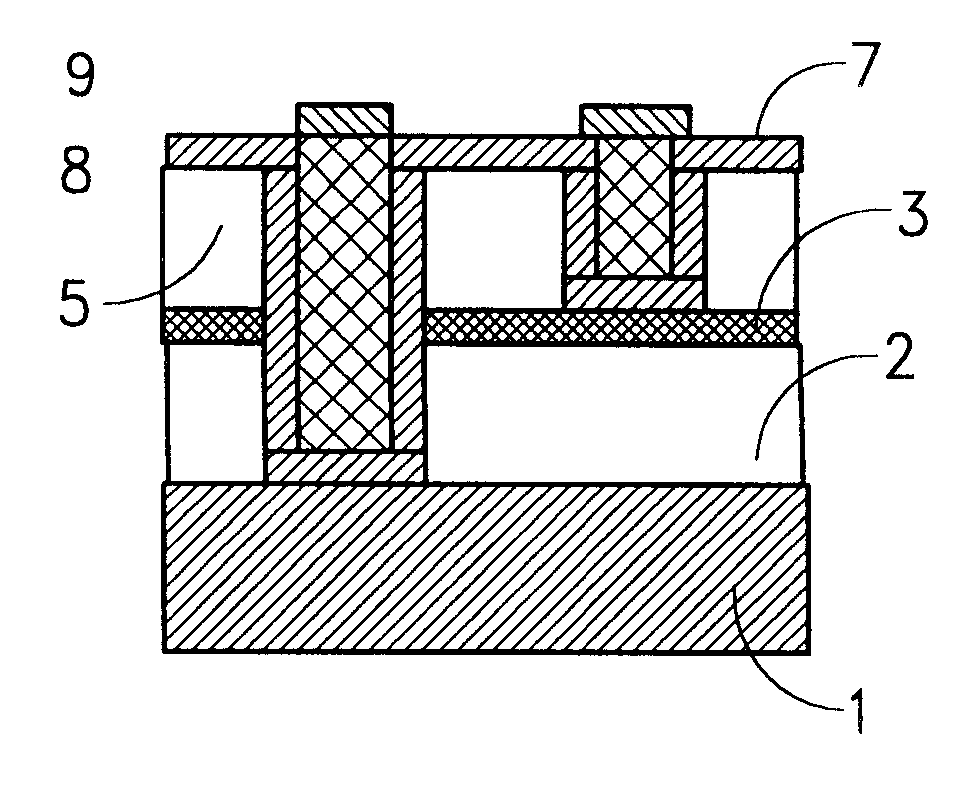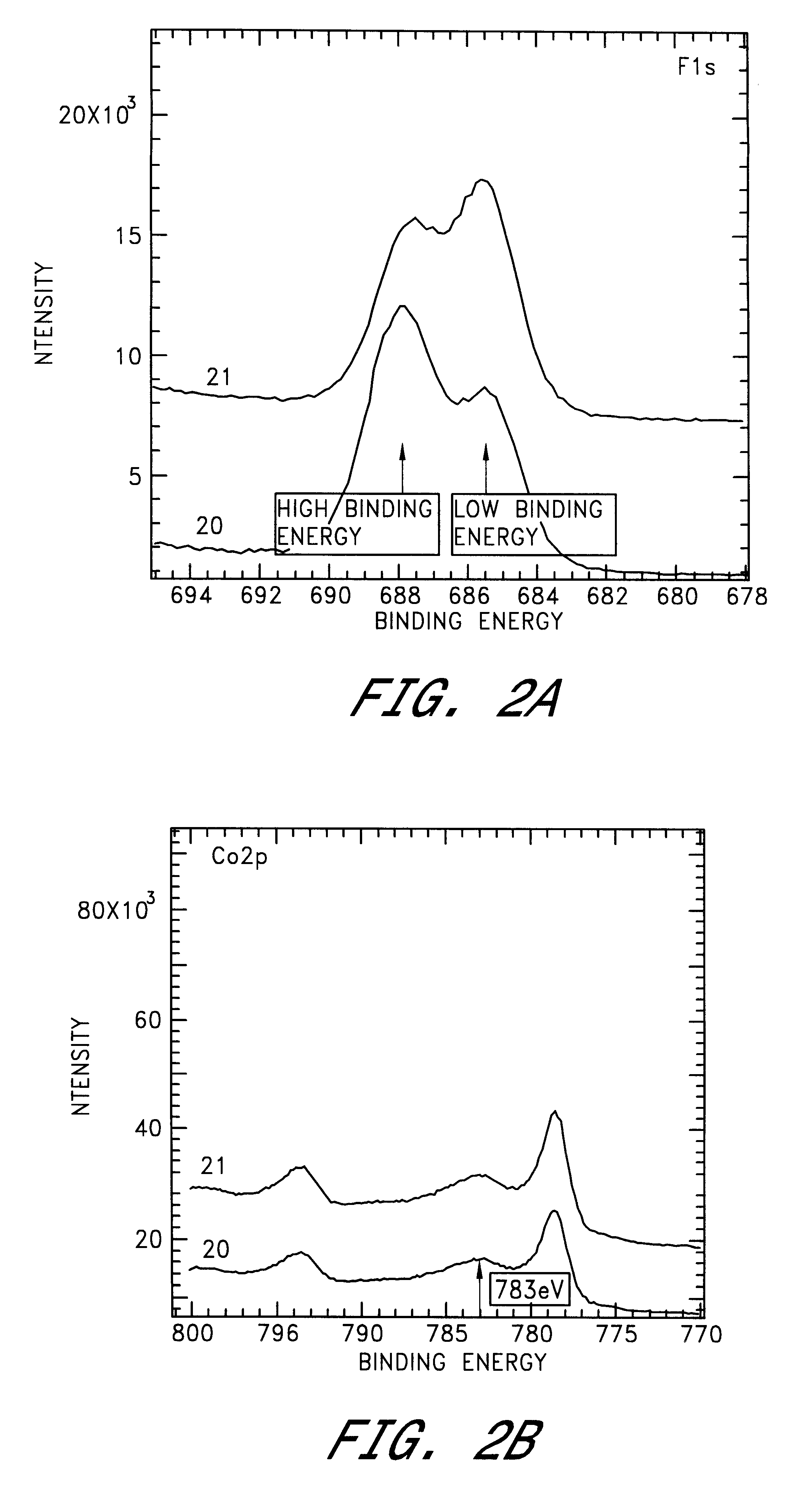Metallization structure on a fluorine-containing dielectric and a method for fabrication thereof
a technology of fluorine-containing dielectrics and metal structures, which is applied in the direction of basic electric elements, solid-state devices, electric devices, etc., can solve the problems of not being able to meet stringent specifications and achieve the effects of avoiding exposure of other parts, low resistance, and low contact resistan
- Summary
- Abstract
- Description
- Claims
- Application Information
AI Technical Summary
Benefits of technology
Problems solved by technology
Method used
Image
Examples
Embodiment Construction
On a flattened substrate, i.e. a silicon wafer (1), a first fluorine-containing dielectric layer (2) is formed. This fluorine-containing dielectric can be a polymer like or ceramic like dielectric, e.g. a fluorinated silicon oxide. Alternatively this fluorine-containing dielectric can also be a dielectric where the fluorine is introduced only after the deposition, for instance by plasma fluorination. This holds for organic polymers comprising Phenyl groups. Examples of such polymers are the benzocyclobutarenes, i.e. benzocyclobutene (BCB) commercially available as Cyclotene 5021.TM., poly arylene ether, i.e FLARE.TM. II, aromatic hydrocarbon, i.e. SILK.TM., polyimides. An advantage of introducing fluorine after the deposition is that this fluorination can be performed locally.
A hard mask layer (3), e.g. a silicon nitride layer, is formed on the first fluorine-containing dielectric layer. A hard mask layer is defined as a layer which can be etched selective to the underlying dielectr...
PUM
| Property | Measurement | Unit |
|---|---|---|
| thickness | aaaaa | aaaaa |
| thickness | aaaaa | aaaaa |
| thickness | aaaaa | aaaaa |
Abstract
Description
Claims
Application Information
 Login to View More
Login to View More - R&D
- Intellectual Property
- Life Sciences
- Materials
- Tech Scout
- Unparalleled Data Quality
- Higher Quality Content
- 60% Fewer Hallucinations
Browse by: Latest US Patents, China's latest patents, Technical Efficacy Thesaurus, Application Domain, Technology Topic, Popular Technical Reports.
© 2025 PatSnap. All rights reserved.Legal|Privacy policy|Modern Slavery Act Transparency Statement|Sitemap|About US| Contact US: help@patsnap.com



